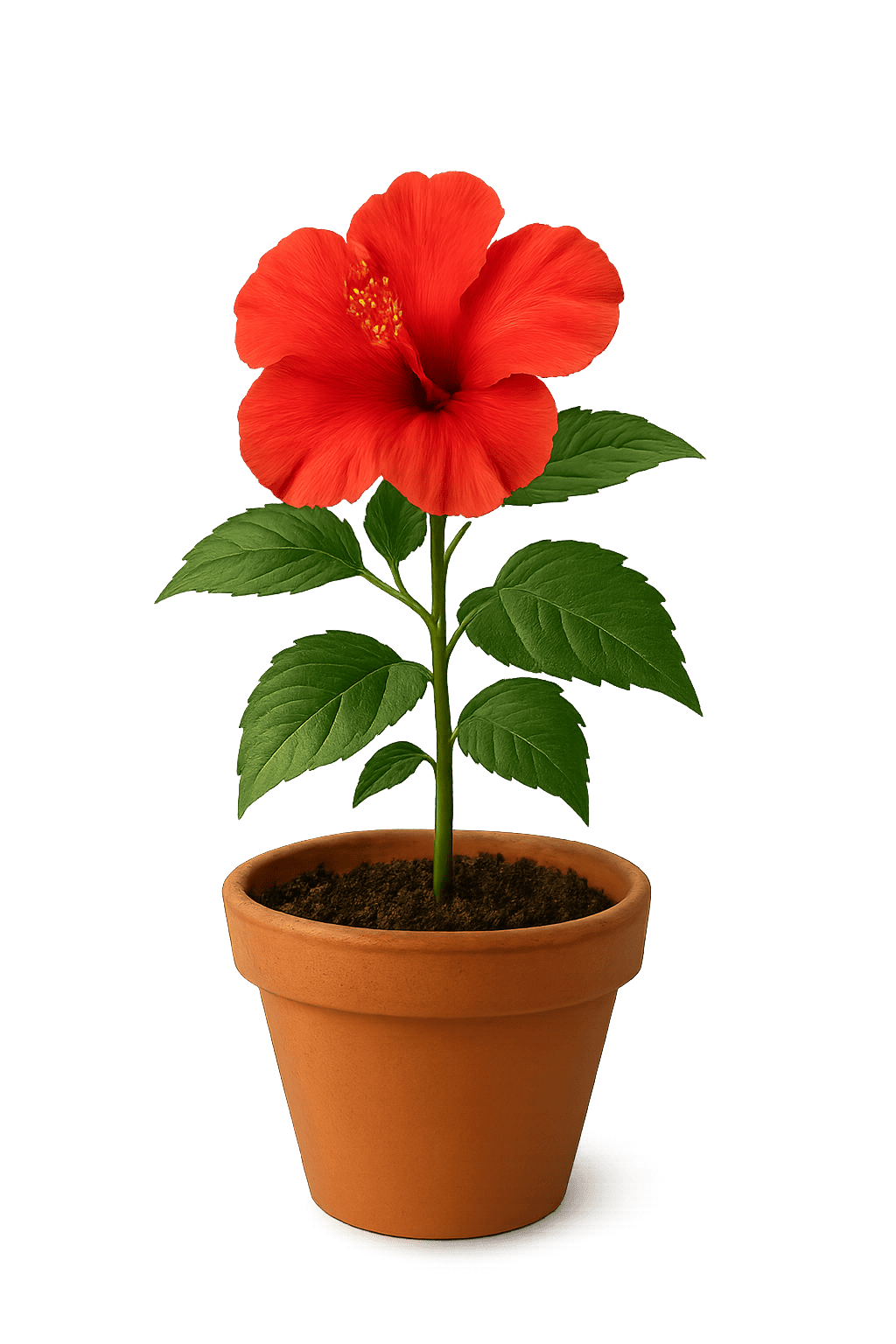Hibiscus
Hibiscus Detailed Encyclopedia Introduction
Hibiscus is a tropical flowering plant with large, showy trumpet-shaped flowers in vibrant colors, known for its beauty.

Basic Info
Family:Malvaceae
Scientific Name:Hibiscus
Origin:Tropical and subtropical regions
Flowering Period:Summer–Autumn
Height:100–300 cm
Lifespan:Perennial
Morphology
Leaves:Lobed glossy leaves
Flowers:Large showy flowers in many colors
Roots:Strong taproot
Stem:Woody shrub stems
Growth Habits
Soil Requirements:Well-drained, fertile soil with good organic matter
Watering Needs:Keep soil consistently moist, especially during blooming
Light Requirements:Full sun
Temperature Requirements:20-35°C (68-95°F)
Classification & Varieties
Main Classifications
Ornamental Varieties
Professional Care
✂️ Pruning Management
Pruning Timing:Late winter or early spring
Pruning Method:Cut back to shape, remove dead branches
Pruning Purpose:Encourage bushier growth and more blooms
Required Tools:Pruning shears, gloves
🛡️ Pest & Disease Management
Common Pests:
Common Diseases:
Prevention Measures:Good drainage, proper spacing
Treatment Methods:Remove affected parts, improve drainage
🌱 Fertilization Management
Fertilizer Type:Balanced fertilizer
Fertilization Frequency:Monthly during growing season
Fertilization Timing:Spring through fall
Fertilization Amount:Light application
💧 Water Requirements
Watering Frequency:Keep soil moist, daily in hot weather
Watering Amount:Moderate watering
Watering Method:Water at base, avoid wetting flowers
Dehydration Signs:Wilting leaves, dropping buds
Basic Care Tips
- •Protect from strong winds and frost
- •Prune in early spring to encourage bushier growth and more blooms
- •Fertilize regularly during the growing season
- •Keep soil consistently moist, daily in hot weather
- •Provide full sun exposure
Ecology Value
Pollinators:Hummingbirds, bees, butterflies
Wildlife:Attracts pollinators, provides nectar
Environmental Value:Tropical garden centerpiece, heat tolerance
Cultural Symbolism
Symbolic Meaning:Delicate beauty, fleeting moments, femininity
Historical Background:Native to tropical regions, symbol of Hawaii
Related Festivals:Hibiscus festivals in tropical regions
Artistic Expression:Featured in tropical art and Hawaiian culture